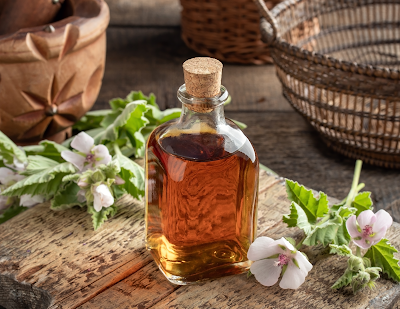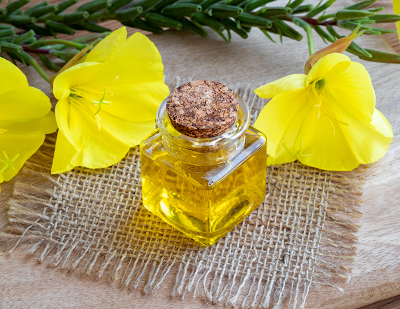A Guide to Creating Your Backyard Pharmacy
A complete Medicinal Garden Kit
Cultivating a backyard pharmacy by growing 10 specific medicinal plants. These plants can serve a variety of purposes, from treating common ailments to promoting relaxation and overall well-being. By cultivating these plants, individuals can take control of their health and potentially reduce their reliance on conventional pharmaceuticals.
The Ten Essential Plants for a Natural Wellness Garden
1. Chicory: The Native American Painkiller
 |
| Chicory roots |
Pain Relief: Chicory, a plant traditionally used by Native Americans, is a natural painkiller known to alleviate various physical discomforts, particularly joint pain. Its root, rich in chicoric acid, possesses potent anti-inflammatory and analgesic properties without the risk of addiction.
Digestive Health: Chicory root acts as a prebiotic and natural laxative, promoting healthy digestion and bowel regularity.
Soil Enrichment: Chicory acts as a natural soil builder by drawing nutrients from deeper layers and depositing them on the surface as it decomposes.
2. Yarrow: The Wound Healer That Saved a Knuckle
 |
| Yarrow |
Wound Care: Yarrow is renowned for its ability to stop bleeding and prevent wound infections. Its efficacy is highlighted by an anecdote where it effectively treated a deep cut.
Insect Repellent: Yarrow tincture, when applied topically, serves as a natural mosquito and insect repellent.
Toothache Relief: Chewing on a fresh yarrow leaf can provide relief from toothaches by numbing the affected area.
Beneficial Insect Attractant: Yarrow flowers attract beneficial insects like ladybugs and bees, which contribute to pest control and pollination in the garden.
3. California Poppy: A Natural Alternative to Sleeping Pills
 |
| California Poppy |
Sleep Aid: California poppy promotes restful sleep, potentially offering a natural alternative to prescription sleeping pills.
Insomnia Relief: Consuming California poppy tea before bedtime or using a more concentrated tincture can help alleviate insomnia.
Beneficial Insect Support: California poppy is a valuable food source for beneficial insects due to its high pollen production. Its low water requirements also benefit surrounding plants.
4. Marshmallow: The Digestive System Soother
 |
| Marshmallow |
Digestive Health: Marshmallow, traditionally used for medicinal purposes, possesses antibacterial properties in its leaves and root. Its mucilage content forms a protective layer within the digestive tract, potentially soothing inflammation and aiding in conditions like heartburn, ulcers, and irritable bowel syndrome.
Soothing Digestive Relief: Consuming an extract made from marshmallow roots can have a soothing and restorative effect on the entire digestive tract.
Pollinator Attractant: The marshmallow plant attracts painted lady butterflies and various native pollinators to the garden.
5. Chamomile: Grandma's "Heal-All" Plant
 |
| Chamomile |
Natural Antibiotic: Chamomile, used for generations as a versatile medicinal plant, is known for its soothing properties.
Digestive Support: Chamomile can help relax digestive muscles and alleviate stomach discomfort.
Skin Health: Chamomile oil is recognized for its skin-healing properties, as it can penetrate deep layers of the skin.
Relaxation and Pain Relief: Adding chamomile to a warm bath can help relax muscles and soothe aching joints.
Garden Health: Chamomile is believed to promote the health and growth of surrounding plants, earning it the nickname "The Gardener’s Doctor."
6. Evening Primrose: Supporting Skin, Nerves, and Hormones
 |
| Evening Primrose |
Skin Health: Evening primrose contains gamma-linolenic acid and linolenic acid, substances crucial for skin health but not naturally produced by the body.
Nerve Pain Relief: The plant's beneficial compounds also support nerve cell membranes, making it a potential aid for nerve pain.
Hormonal Balance: Evening primrose may assist in balancing hormone levels, potentially addressing issues like fatigue, unexplained weight gain, and temperature sensitivity.
Wound and Rash Treatment: A poultice made from crushed evening primrose leaves or roots can be applied to wounds and skin rashes to accelerate healing.
Pollinator Attractant: The plant serves as a food source and attracts hawk moths, butterflies, and bumblebees, contributing to pollination.
7. Lavender: The Aromatic Multitasker for Anxiety, Depression, and Hair Health
 |
| Lavender |
Anxiety Relief: Lavender oil has been shown to reduce anxiety levels, potentially offering a natural alternative to certain anxiety medications.
Depression Support: Using lavender tincture alongside conventional antidepressants may enhance recovery from mild to moderate depression and lower the risk of relapse.
Hair Health: Applying lavender oil to the scalp can improve blood flow, strengthen hair follicles, and potentially aid in hair regrowth.
Insect Repellent and Sleep Aid: Placing a pouch of fresh lavender near sleeping areas can deter insects and promote relaxation for better sleep.
Pest Control and Plant Support: Lavender acts as a natural pest repellent in gardens and is also considered a beneficial companion plant, enhancing the growth of neighboring species. It also attracts various butterfly species.
8. Echinacea: Boosting Immunity Naturally
 |
| Echinacea |
Immune System Support: Echinacea is widely recognized for its immune-boosting properties, potentially enhancing the body's defense against illnesses.
Caution Against Counterfeits: The sources stress the importance of growing your own echinacea for medicinal use, as commercially available supplements may be counterfeit or less effective.
Immune-Boosting Beverage: Consuming a hot drink made from simmered echinacea roots can provide an immune boost at the first sign of a cold or other ailments.
Moisture Retention and Weed Control: Echinacea can benefit garden ecosystems by helping retain moisture and suppress weed growth.
9. Calendula: A Powerful Ally for Wound Healing and Lymphatic Health
 |
| Calendula |
Wound Healing: Calendula is renowned for its wound-healing properties and ability to minimize scarring. Anecdotal evidence suggests its effectiveness in treating even severe wounds.
Lymphatic System Support: Calendula tea is believed to stimulate lymphatic fluid movement, aiding in the removal of toxins and metabolic waste from the body.
Historical Wound Treatment: During the Civil War, calendula flowers were directly applied to open wounds and used in wound dressings to speed up healing and prevent infection.
Pest Control and Soil Health: Calendula helps repel insect pests and improves soil quality through its symbiotic relationship with beneficial fungi.
10. Feverfew: Nature's Answer to Fevers, Migraines, and Inflammation
 |
| Feverfew |
Fever and Migraine Relief:Feverfew acts as a potent anti-inflammatory, traditionally used to address fevers, migraines, and joint pain. The compound parthenolide, found in its flower heads and leaves, is responsible for these medicinal effects.
Pest Control and Beneficial Insect Attractant: Feverfew serves as a natural pest repellent while attracting beneficial insects like hoverflies and tachinid flies to the garden.
Conclusion
Cultivating a backyard pharmacy offers a proactive and empowering approach to health and wellness. By incorporating these ten medicinal plants into your gardens, you can potentially harness the power of nature to address common ailments, support overall well-being, and foster a deeper connection with the natural world.
However, it's crucial to remember that while these plants offer potential health benefits, they are not substitutes for professional medical advice. Individuals with health concerns should consult with qualified healthcare providers for personalized guidance and treatment plans.
wish you the best on your journey to natural health





.jpg)























.jpg)















